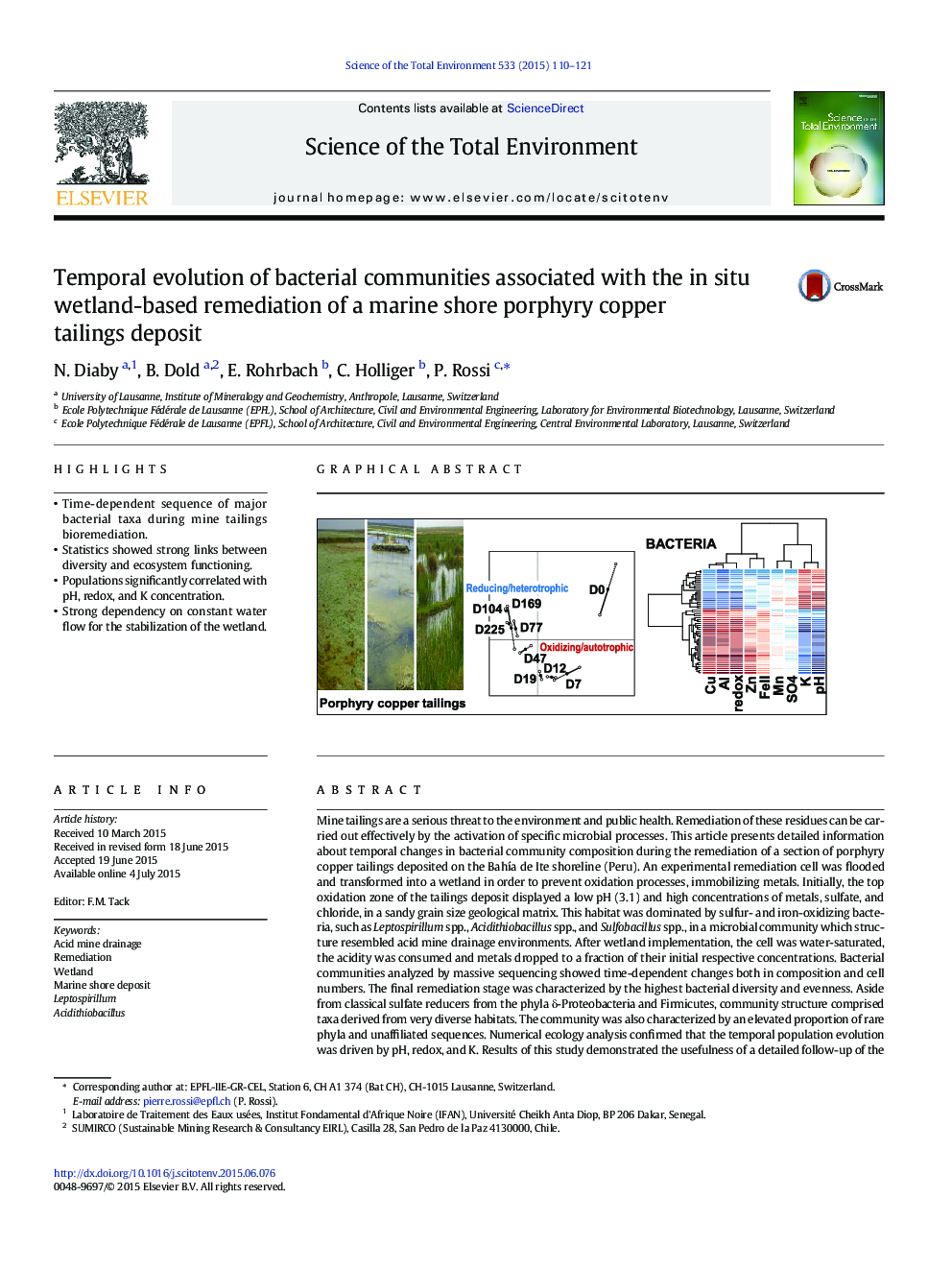| کد مقاله | کد نشریه | سال انتشار | مقاله انگلیسی | نسخه تمام متن |
|---|---|---|---|---|
| 6326210 | 1619751 | 2015 | 12 صفحه PDF | دانلود رایگان |
- Time-dependent sequence of major bacterial taxa during mine tailings bioremediation.
- Statistics showed strong links between diversity and ecosystem functioning.
- Populations significantly correlated with pH, redox, and K concentration.
- Strong dependency on constant water flow for the stabilization of the wetland.
Mine tailings are a serious threat to the environment and public health. Remediation of these residues can be carried out effectively by the activation of specific microbial processes. This article presents detailed information about temporal changes in bacterial community composition during the remediation of a section of porphyry copper tailings deposited on the BahÃa de Ite shoreline (Peru). An experimental remediation cell was flooded and transformed into a wetland in order to prevent oxidation processes, immobilizing metals. Initially, the top oxidation zone of the tailings deposit displayed a low pH (3.1) and high concentrations of metals, sulfate, and chloride, in a sandy grain size geological matrix. This habitat was dominated by sulfur- and iron-oxidizing bacteria, such as Leptospirillum spp., Acidithiobacillus spp., and Sulfobacillus spp., in a microbial community which structure resembled acid mine drainage environments. After wetland implementation, the cell was water-saturated, the acidity was consumed and metals dropped to a fraction of their initial respective concentrations. Bacterial communities analyzed by massive sequencing showed time-dependent changes both in composition and cell numbers. The final remediation stage was characterized by the highest bacterial diversity and evenness. Aside from classical sulfate reducers from the phyla δ-Proteobacteria and Firmicutes, community structure comprised taxa derived from very diverse habitats. The community was also characterized by an elevated proportion of rare phyla and unaffiliated sequences. Numerical ecology analysis confirmed that the temporal population evolution was driven by pH, redox, and K. Results of this study demonstrated the usefulness of a detailed follow-up of the remediation process, not only for the elucidation of the communities gradually switching from autotrophic, oxidizing to heterotrophic and reducing living conditions, but also for the long term management of the remediation wetlands.
369
Journal: Science of The Total Environment - Volume 533, 15 November 2015, Pages 110-121
